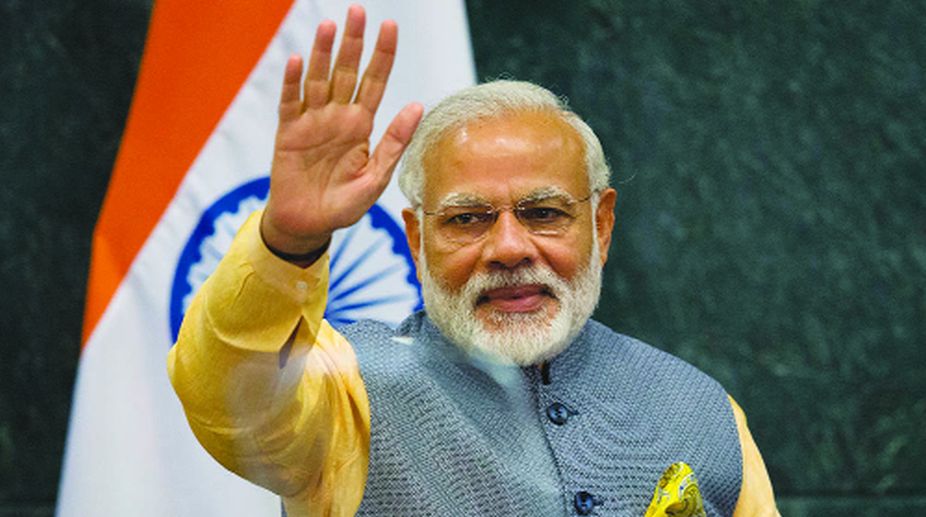India seeking to expand its ties across the globe has been receiving positive signals. Nations flock to sign security and economic pacts with India. All this because of the nation’s military and economic might which guides its foreign policy. The government has been on international overreach seeking to enhance the nation’s stature. While India has clearly shifted into the US camp, yet it continues to engage with the US’s challengers in the region for its own security interests.
India seeks to re-establish ties with China after they had deteriorated following the Doklam standoff. Though it conducts exercises with the US and Japan, it has deliberately kept Australia out of the group. The US and Japan have indicated that this grouping is against Chinese hegemony, while India has made no such comments. In fact, the Indian side has sought to downplay the intentions behind the exercise.
Advertisement
Even within Asia, India and China continue to establish footholds in each other’s backyard, though with caution. India has close ties with Vietnam and is considering exporting BrahMos missiles to the country. It has now been granted a naval base in Indonesia. All Asean members, as guests for this year’s Republic Day, signed defence cooperation agreements with India. China already has a base in Sri Lanka, has enhanced relations with Maldives and may soon possess a base in Myanmar, all in India’s backyard.
At the Shangri-la dialogue in Singapore a few days ago, Prime Minister Modi said that the two Asian neighbours have shown ‘maturity and wisdom’ in managing issues and ensuring a peaceful border, adding cooperation between the two was expanding. His positive comments were appreciated by China. In the presence of the US Defence Secretary, Jim Mattis, he also stressed on ‘freedom of navigation, unimpeded commerce and peaceful settlement of disputes in accordance with international law’ and ‘impossible burdens of debt’ – both statements directed at China. This was a clear example of a careful manifestation of a neutral foreign policy.
While the US imposes sanctions on Russia and Iran, India has officially announced that despite US imposing CAATSA, India would continue with its military purchases from Russia. In addition, it has maintained that it would purchase oil from Iran and continue with its development of the Chabahar port. India has stated that since these sanctions are not supported by the UN, it would not accept them.
More than 60 per cent of India’s military equipment is of Russian origin. However, in recent times, India by seeking equipment from Western suppliers, including the US, caused the two countries to drift apart. The Indian economy is almost twice that of Russia, though bilateral trade is low. India remains wary of growing Russian proximity to Pakistan and hence would desire to take the relationship back to earlier levels.
Therefore, it cannot let US sanctions impede its arms purchases from Russia. It may seek a diplomatic way out, but if push comes to shove, it would be a tough decision. India may have to risk US sanctions but cannot break its ties with Russia on the whims and fancies of the US.
Simultaneously, relations with the US are growing. The US, in deference to increasing ties with India, has rechristened its Pacific Command as the Indo-Pacific Command. The change may be symbolic but is indicative of expanded ties. At every forum, the US continues to state that India is a natural strategic ally, with whom it seeks to enhance ties.
The reasons for the US’s position are obvious. Firstly, India is the only nation in Asia which possesses the military and economic leverage to challenge the Chinese. Secondly, for India, Afghanistan is a natural ally, where it would seek to maintain a strong economic foothold, not military, which benefits the US. Thirdly, India’s growing military demands would fuel the US economy. Finally, as two of the world’s largest democracies, it is but natural that the two nations would see eye-to-eye on multiple issues.
There are hiccups though. India wants to continue with its engagement with Russia and Iran, two of the US’s main adversaries for multiple reasons. This would always remain a stumbling block. India is carefully crafting its foreign strategy, not taking sides as well as not commenting on contentious international issues which are a fallout of the growing rivalry.
Its membership of an organisation like the Shanghai Cooperation Organization (SCO) dominated by Russia and China would always remain a thorn. India was North Korea’s third largest trading partner, until the sanctions. Though it cut down its trade, it is amongst the few countries which continues to maintain diplomatic relations with Pyongyang, despite the US then desiring that India withdraw its staff.
Israel and Iran are sworn enemies. Each sees the other as a threat to survival. India has again been playing a safe diplomatic manoeuvring game between the two. While it voted against the US decision to shift its embassy to Jerusalem, it did not participate in the debate or criticise the US decision. An Israeli newspaper in a comment asked that in the event of an Israel-Iran war, who would India support.
India is amongst the largest purchasers of military hardware from Israel as also the second largest procurer of oil from Iran. The bonhomie between Modi and Netanyahu was evident, so was the understanding between Modi and the Iranian President, Hassan Rouhani during their visits to India. India has never commented on the US withdrawing from the Iran nuclear deal (JCPOA), nor stopped its procurement of oil nor its development of the Chabahar port.
The present government has pushed Indian diplomacy to the limits, maintaining relations with countries that are antagonistic to each other. It has managed to walk the tightrope so far. However, as time passes and the US begins pushing India into downsizing relations with Russia and Iran, the government will face its true test.
The writer is a retired Major-General of the Indian Army.











